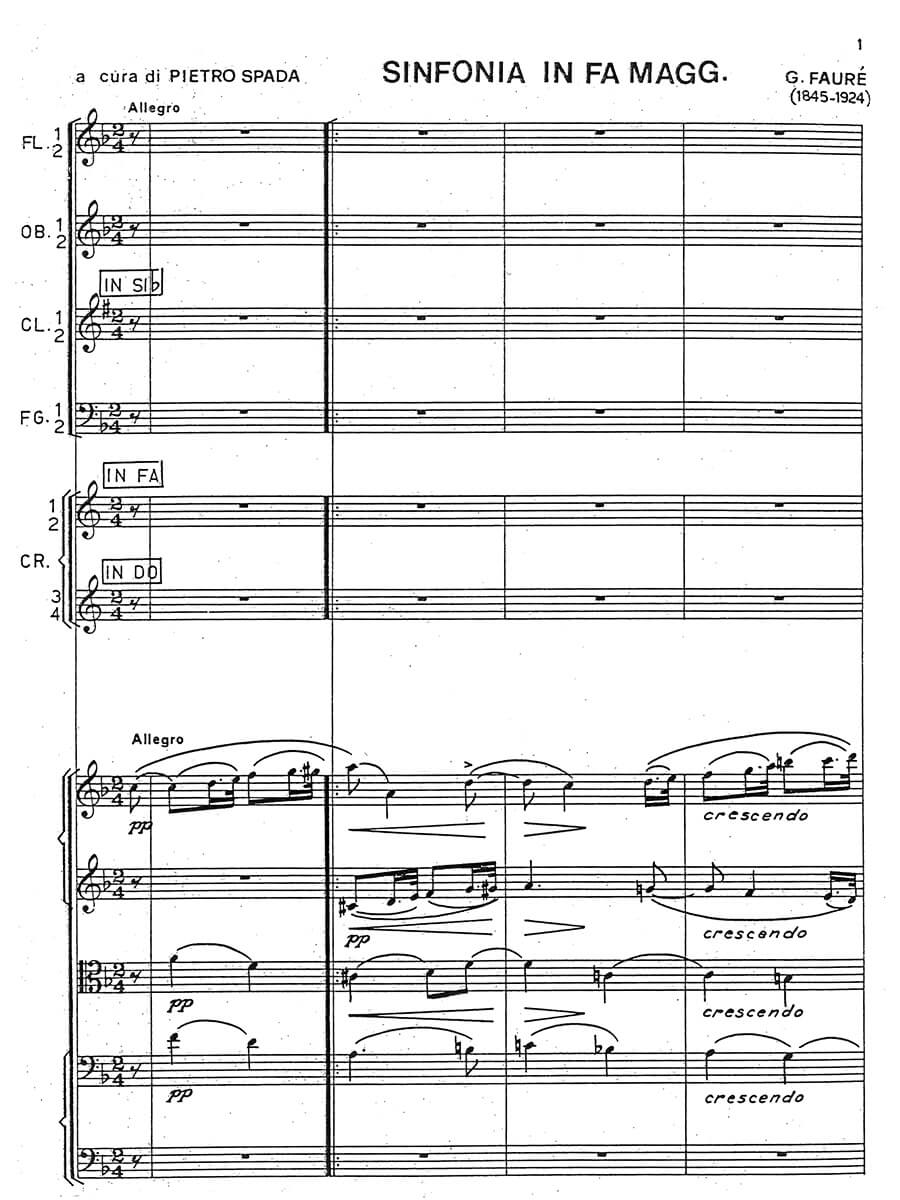Sinfonia in Fa Magg.
Fauré, Gabriel
28,00 €
Preface
Gabriel Fauré
(b Pamiers, Ariège, 12 May 1845; d Paris, 4 Nov 1924).
Symphony in F / Suite in F
Allegro
Preface
By the French composer known for his many songs and piano pieces, this rare orchestral work was the first of three symphonies Fauré attempted – the reasons why I say it was attempted is that Fauré was plagued by self-criticism and as a result many works were left unfinished or were destroyed, with only a handful of orchestral works in his published body of work. Notable are the abandoned symphonies. His second Symphony in d minor was completed in 1884 yet was never published. The music critic, Emile Vuillermoz (1878–1960) published a biography on Fauré, in which he usefully includes a works list, noting which works remained unpublished or incomplete (see Vuillermoz, 1983 translated, 160–171). Although this includes reference to the second symphony it does not refer to the current work, the first symphony.
It is significant to place this work in its broader historical context: with a compositional timeline suggested to be 1866–1873 it spans the Franco-Prussian War and a time when Fauré had enrolled in the army (1870). He was initially stationed with the First Light Regiment, then the 28th Infantry Regiment. Although, as Duchen notes, he was known to play piano on occasion to his fellow soldiers in social situations, his composing stalled (2000, 29–32). Either side of the war he was writing piano works and some songs. Fauré moved from Paris at the end of the war to Switzerland where he worked as a teacher in his old school, which had been relocated to Cours-sous-Lausanne. As such Fauré’s engagement with new music and cultural developments would have been more limited than during his 11 years studying in Paris at the Ecole Niederneyer (1854–1866). The guiding figure in developing Fauré’s compositional confidence, and encouraging him back into cultural-public life was Camille Saint-Sæns (1835–1921). It was indeed Saint-Sæns who founded the Société Nationale de Musique, holding its first concert in November 1871 at the Salle Pleyel in Paris. Fauré had many a premiere of his work with the Société Nationale de Musique and notable is that he became the secretary of the Société Nationale de Musique in 1874. According to Duchen this organisation performed part of one of his symphonies ‘which [Fauré] subsequently abandoned as a failure’ (2000, 35). Clearly he only abandoned works after hearing them and critically reflecting on them.
It is notable that Fauré recycled material he had abandoned or not published. Orledge listed a few uses of the themes from this present Allegro in other works (1979, 335). Not only does he identity aspects of the third and fourth movement in earlier pieces (Intermède symphoniques for piano, 1869 and Gavotte for piano, 1869 respectively), but he identifies significantly the continued life of this Allegro within Allegro symphonique for piano (published in 1895) transcribed by Léon Boëllmann (referred to below)
Read full preface > HERE
Score Data
| Edition | Repertoire Explorer |
|---|---|
| Genre | Orchestra |
| Size | 210 x 297 mm |
| Printing | Reprint |
| Pages | 92 |
